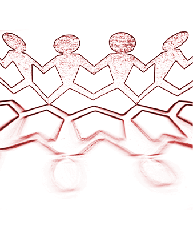Open Positions in the Schiebel Lab
Master Thesis “Centriole Duplication”
Are you passionate about cell biology and eager to explore the fascinating world of centrioles? The Prof. Elmar Schiebel at the Centre for Molecular Biology (ZMBH) at Heidelberg University invites applications for a Master position focusing on centriole duplication.
About the Position: The successful candidate will join Prof. Elmar Schiebel’s research group, renowned for its work on gamma-tubulin, centrioles and centrosome function. This Master project will investigate the molecular mechanisms underlying centriole duplication. The research will combine advanced microscopy techniques, biochemistry, and genetic tools to unravel the complexities of centriole assembly and function. The Master student will be supported by a Hiwi contract of ca. 500 € per months.
How to Apply: Interested candidates should send their application, including a CV, cover letter, and contact information for two references, to Prof. Elmar Schiebel at schiebel.elmar@zmbh.uni-heidelberg.de.
Relevant recent publications:1 Liu, P. et al. Insights into the assembly and activation of the microtubule nucleator gamma-TuRC. Nature 578, 467-471 (2020). https://doi.org:10.1038/s41586-019-1896-6 2 Würtz, M. et al. Modular assembly of the principal microtubule nucleator ?-TuRC. Nat Comm 473, doi: 10.1038/s41467-41022-28079-41460 (2022). 3 Karasu, O. R., Neuner, A., Atorino, E. S., Pereira, G. & Schiebel, E. The central scaffold protein CEP350 coordinates centriole length, stability, and maturation. J Cell Biol 221 (2022). https://doi.org:10.1083/jcb.202203081 4 Gao, Q. et al. The structure of the gamma-TuRC at the microtubule minus end - not just one solution. Bioessays, e2400117 (2024). https://doi.org:10.1002/bies.202400117 5 Vermeulen, B. J. et al. gamma-TuRC asymmetry induces local protofilament mismatch at the RanGTP-stimulated microtubule minus end. EMBO J (2024). https://doi.org:10.1038/s44318-024-00087-4
**************************
© Copyright Universität Heidelberg. Impressum.
